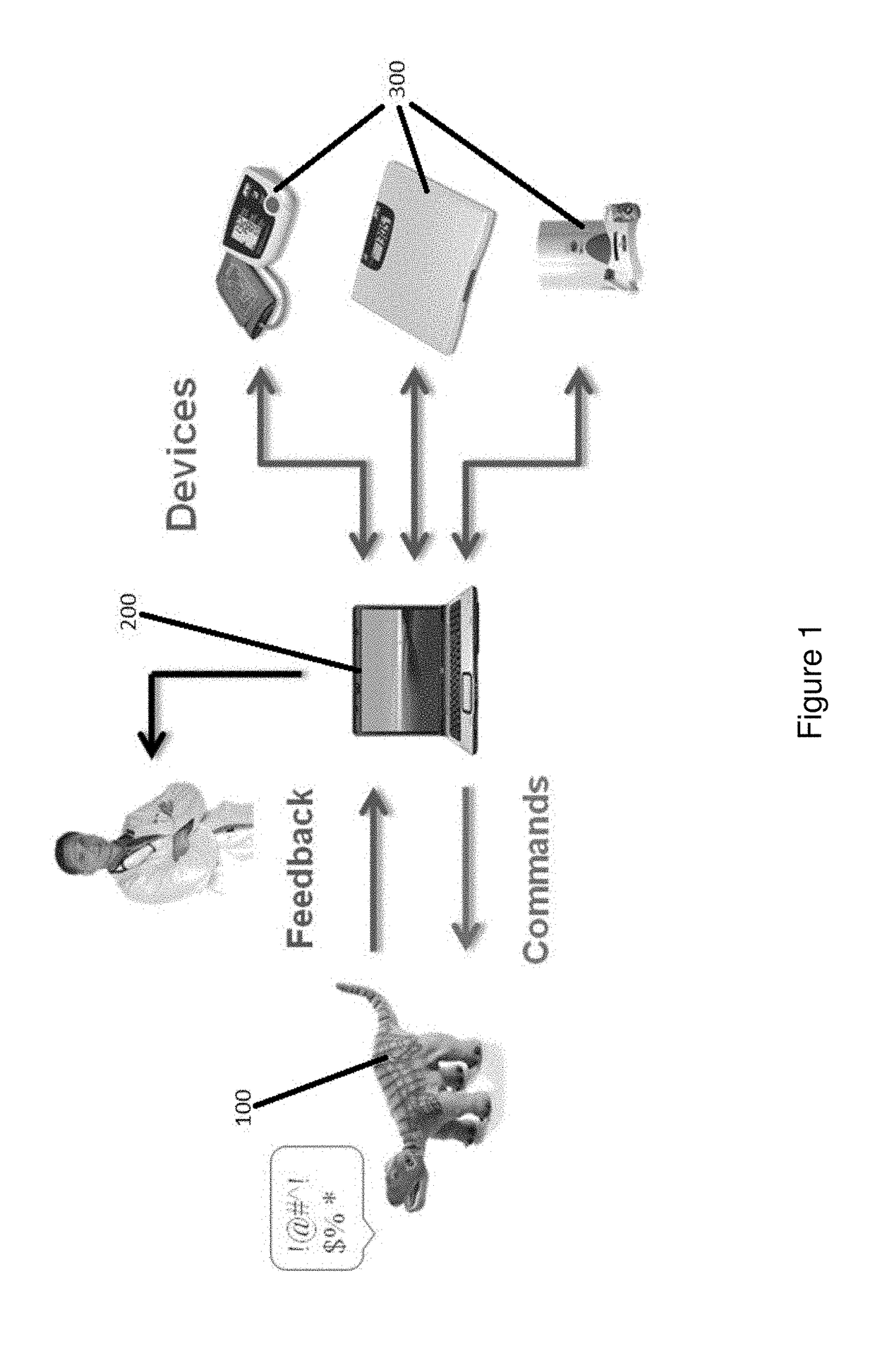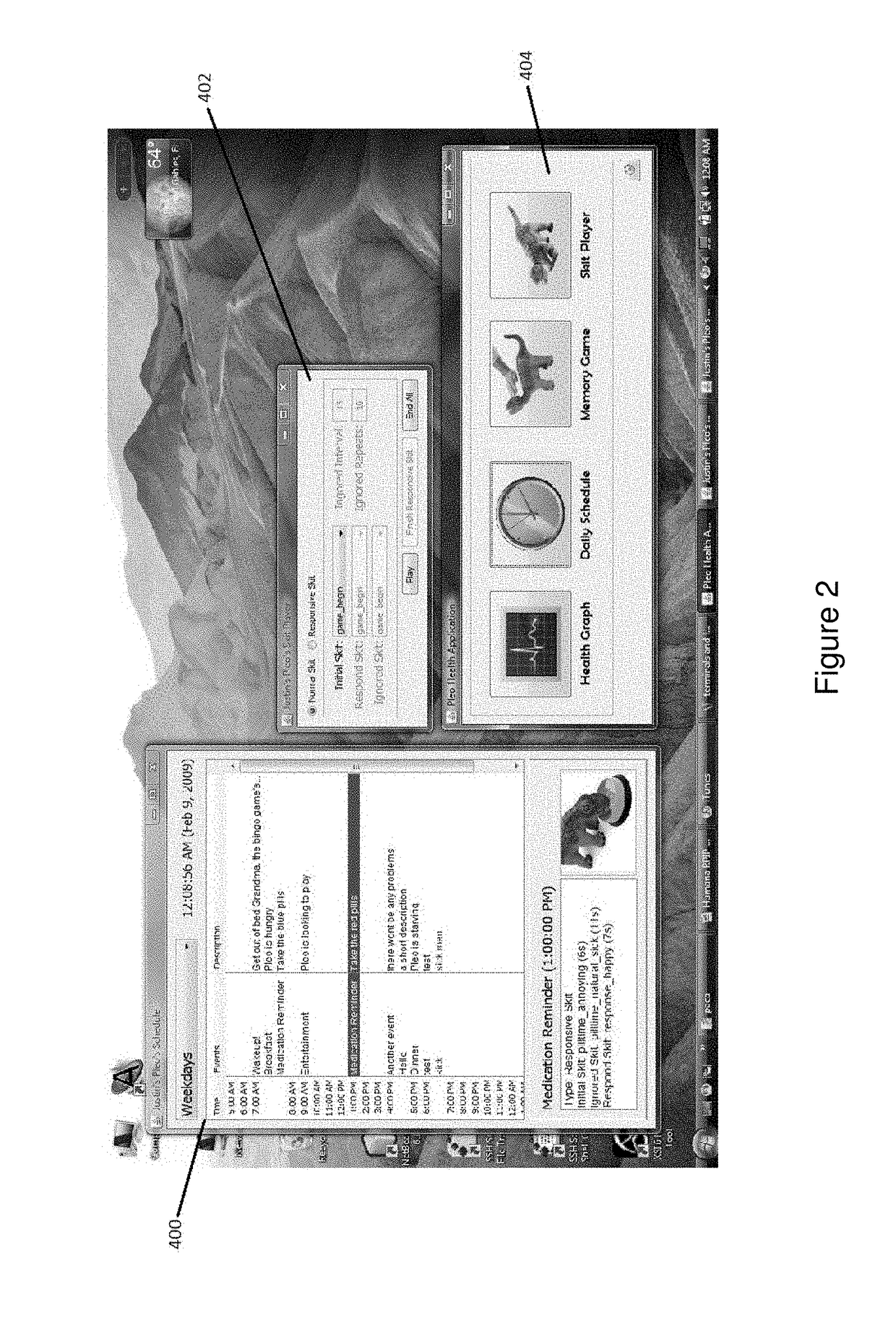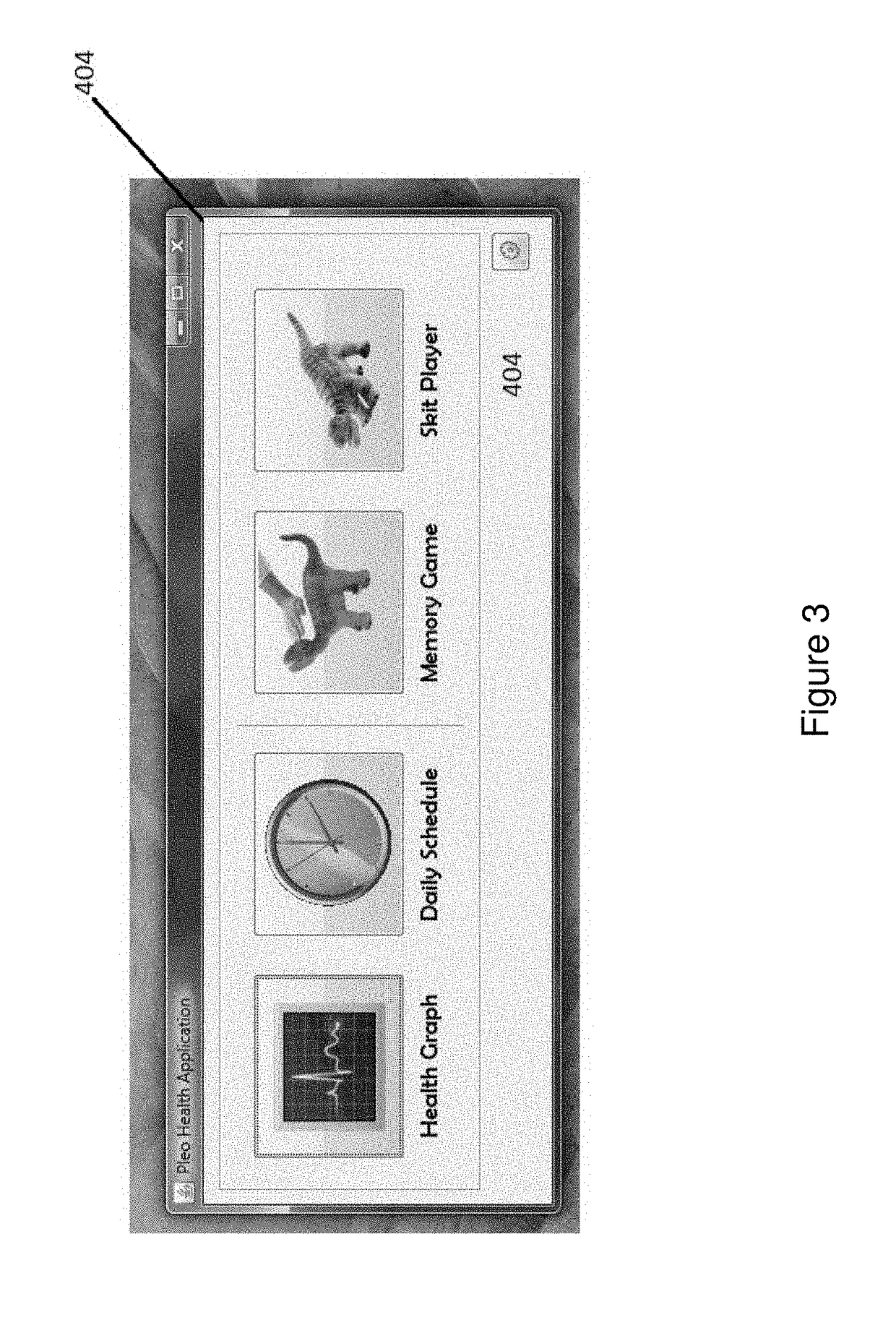System and method for improving healthcare through social robotics
a social robotics and healthcare technology, applied in the field of social robotics, can solve the problems of reducing unable to consider completely remote controlled robots as social, contributing to a more expensive healthcare system, etc., and achieves the effects of improving the relevance of assisted living facilities, improving life expectancy, and easing the burden of an increasingly older population
- Summary
- Abstract
- Description
- Claims
- Application Information
AI Technical Summary
Benefits of technology
Problems solved by technology
Method used
Image
Examples
Embodiment Construction
[0021]An exemplary embodiment of a system for improving healthcare through social robotics comprises a social robot, a computer, a program in the computer which enables communication between the computer and the robot, and a wireless healthcare device. In some exemplary embodiments, the computer program may also enable communication between the computer and the wireless healthcare device. The program in the computer may comprise code capable of handling communication with the social robot over serial / wireless connections. In a preferred exemplary embodiment, the computer receives data from the wireless electronic device where the data relates to a health activity of the patient, processes the data, and transmits a behavior cue to the robot based on the received data. FIG. 1 shows a flow chart for an exemplary embodiment of the system and method of the present invention where the system comprises an exemplary embodiment of a social robot 100, a computer 200, a program in the computer...
PUM
 Login to View More
Login to View More Abstract
Description
Claims
Application Information
 Login to View More
Login to View More - R&D
- Intellectual Property
- Life Sciences
- Materials
- Tech Scout
- Unparalleled Data Quality
- Higher Quality Content
- 60% Fewer Hallucinations
Browse by: Latest US Patents, China's latest patents, Technical Efficacy Thesaurus, Application Domain, Technology Topic, Popular Technical Reports.
© 2025 PatSnap. All rights reserved.Legal|Privacy policy|Modern Slavery Act Transparency Statement|Sitemap|About US| Contact US: help@patsnap.com



